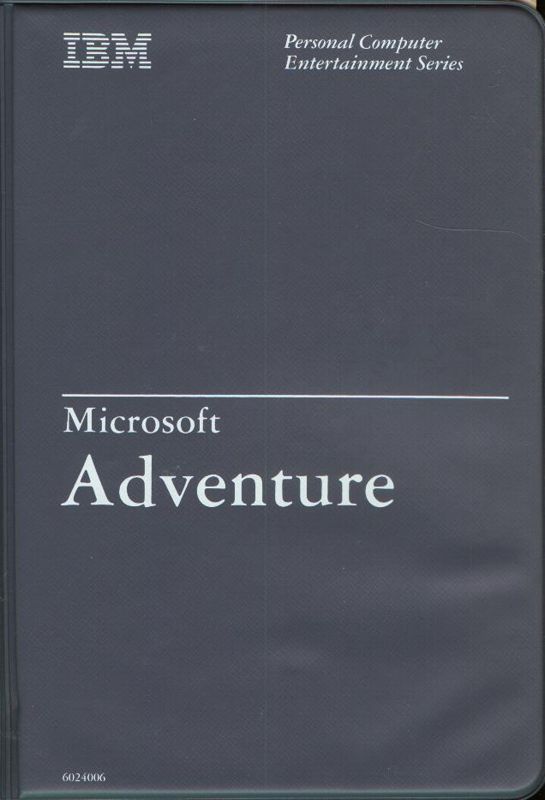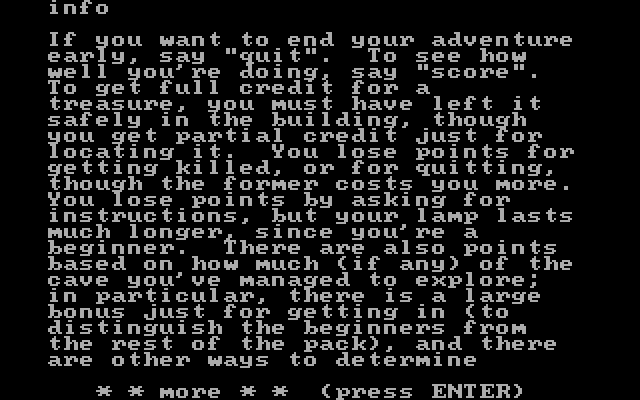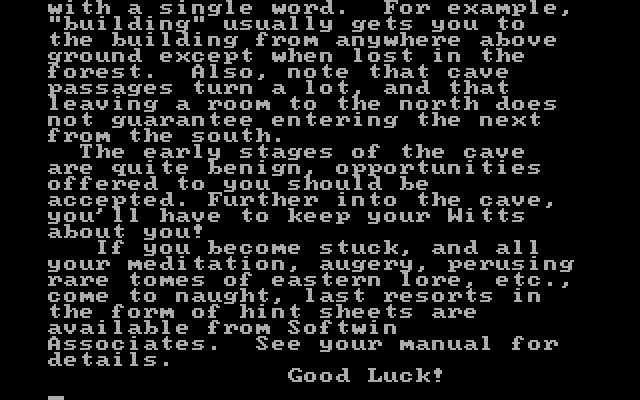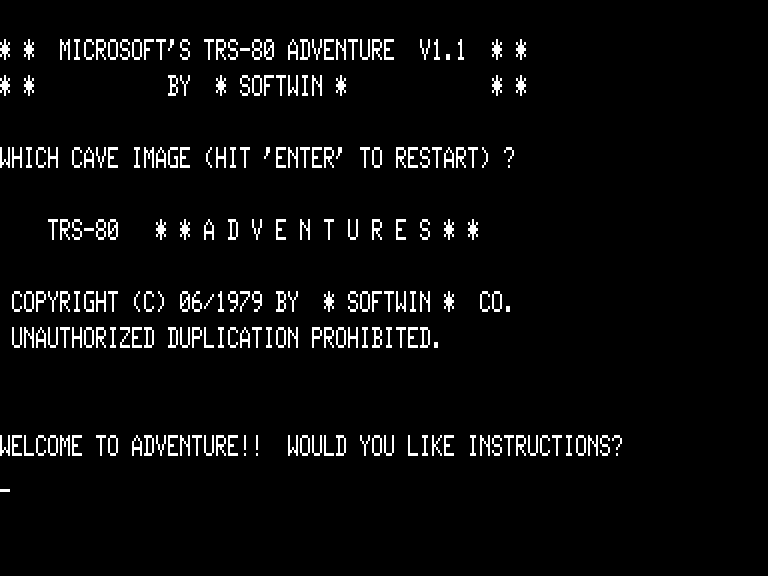Retro Replay Review
Gameplay
Microsoft Adventure captures the essence of early text-based exploration with a straightforward command interface that invites players to type simple verbs paired with nouns—such as “GET LAMP” or “GO NORTH.” This interaction model, though minimalist by modern standards, encourages deep engagement and creative problem-solving. Each command unfolds new possibilities, prompting players to experiment until they uncover hidden treasures or decipher the correct sequence of moves to avoid peril.
(HEY YOU!! We hope you enjoy! We try not to run ads. So basically, this is a very expensive hobby running this site. Please consider joining us for updates, forums, and more. Network w/ us to make some cash or friends while retro gaming, and you can win some free retro games for posting. Okay, carry on 👍)
The pacing of the game hinges on meticulous exploration and careful note-taking. As you traverse the labyrinthine passages of the cave, you’ll repeatedly map locations, track objects, and record magical incantations. Patience and attention to detail are rewarded as you avoid deadly pitfalls and learn the patterns of the mischievous little dwarves that guard certain corridors. For newcomers to interactive fiction, this deliberate tempo can feel both challenging and immensely satisfying.
Puzzle design in Microsoft Adventure strikes a balance between intuitive logic and occasional arbitrariness. Some obstacles—like navigating twisty passages that all look alike—test your ability to chart and memorize routes, while others depend on creative use of inventory items or delivering the right magical phrase. Despite a few moments of guesswork, most puzzles follow consistent rules that, once understood, empower players to make steady progress toward the ultimate goal of amassing treasure.
Graphics
Given its 1979 origins on early home computers, Microsoft Adventure features no graphical visuals beyond the text-based descriptions rendered on screen. Each location is vividly evoked through carefully chosen words, relying on the player’s imagination to conjure dark caverns lit by the glow of a magic lamp or winding tunnels fraught with danger. This minimalist presentation is part of the game’s charm, creating a uniquely personal experience that graphic-heavy titles rarely replicate.
The ASCII art elements, such as simple maps or symbolic representations of inventory, serve as functional aids rather than aesthetic flourishes. They reinforce the game’s nostalgic appeal, reminding modern players of a time when the boundary between program and imagination was delightfully thin. Although this approach may seem dated, many fans of interactive fiction cherish the cognitive freedom it offers, turning a lack of visual spectacle into an opportunity for mental immersion.
Performance is swift even on period hardware, with near-instantaneous responses to typed commands. The soundscape is silent, placing full emphasis on text-driven storytelling and the mental images each description evokes. While there’s no soundtrack or sound effects, the occasional beep of a vintage terminal can heighten the sense of authenticity for enthusiasts playing with original or emulated hardware.
Story
At its core, Microsoft Adventure adapts the legendary Colossal Cave saga, inviting players to delve deep into a sprawling underground world in search of hidden riches. The narrative unfolds dynamically through discoverable descriptions rather than a rigid plot, granting you autonomy to chart your own course. This open-ended structure fosters a true sense of discovery, as every new chamber or secret nook holds the promise of treasure—or peril.
Encounters with the faint whisper of magic and the scuttling footsteps of little dwarves inject a sense of wonder and tension. These creatures, while small, can be menacing in tight passages or when you’re carrying valuable prizes. Similarly, the use of spells and incantations adds an arcane dimension to the adventure, hinting at deeper mysteries that lurk within the cave’s depths.
Though the story lacks character-driven dialogue or a structured narrative arc, it compensates by offering an authentic sense of exploration that resonates with fans of early interactive fiction. The atmosphere is built upon descriptive prose, player-driven choices, and the thrill of stumbling upon a glittering hoard of jewels or uncovering a hidden waterfall. In this sense, the “story” emerges from your personal journey through twisting corridors and your triumphs over the cave’s enigmatic challenges.
Overall Experience
Microsoft Adventure stands as a testament to the enduring appeal of text-based gaming. Its classic design may feel rudimentary to those accustomed to high-fidelity graphics and cinematic storytelling, yet it delivers a uniquely captivating experience rooted in discovery and intellect. By relying on your imagination and problem-solving skills, the game fosters a deeper connection between player and digital world.
Accessibility remains strong thanks to a simple interface and clear, concise descriptions. The learning curve is gentle—once you grasp the basic command structure, you’re free to wander, experiment, and learn from your mistakes. However, patience is essential: blind alleys and random dwarf attacks can lead to frustration if you neglect to save regularly or fail to chart your progress.
For collectors of gaming history and aficionados of interactive fiction, Microsoft Adventure provides both a nostalgic journey and a robust challenge. Its timeless appeal lies in the pure thrill of exploration, puzzle-solving, and the mental maps you forge. While it may not satisfy those seeking flashy visuals or complex narratives, it remains an important piece of gaming heritage and a rewarding adventure for anyone eager to test their wits within the shadows of the Colossal Cave.
 Retro Replay Retro Replay gaming reviews, news, emulation, geek stuff and more!
Retro Replay Retro Replay gaming reviews, news, emulation, geek stuff and more!









Reviews
There are no reviews yet.